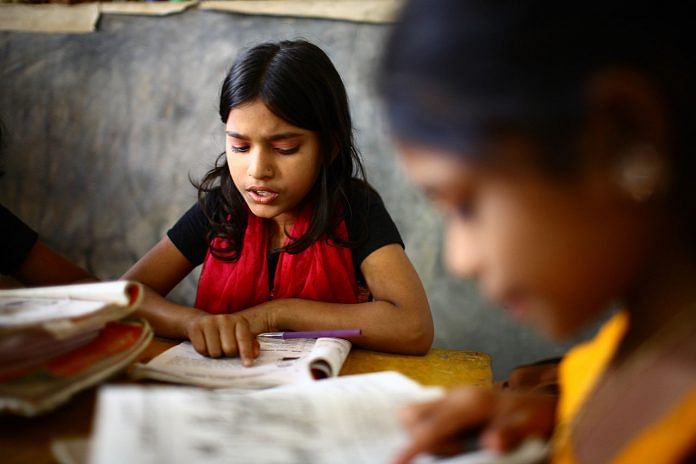The move will increase the economic and social inequalities by pushing children from vulnerable backgrounds out of the school system.
The Lok Sabha last week passed a bill to amend the Right to Education (RTE) Act that does away with the no-detention policy mentioned in the law. The policy prohibits schools from detaining or expelling children until they complete elementary education.
However, the decision of Parliament to bring back detention gives states the autonomy to hold back promotions of students in Class 5 and Class 8. A close look at the state-level data unfolds the existing layers of inequalities in education. This move of re-introducing detention will further increase the economic and social inequalities by pushing children from vulnerable backgrounds out of the school system.
While the Right to Education Act, 2009, lists the set of essential norms and standards for equitable quality education in schools, only 10 per cent schools comply with these norms. Two major deadlines given out in the years 2013 and 2015 have elapsed and the concern over non-implementation due to inadequate resources continues to remain a major barrier to universal quality school education.
Therefore, instead of putting all the blame on students for poor learning achievements, it is imperative to look at some of the major systemic gaps that have led to the poor standard of education system in the country. While talking in absolute terms there has been a slight increase in the budget allocation for education, but there has also been a decline in the percentage of the total school education budget to the GDP.
In 2012-13, the public expenditure on education was 3.1 per cent of the total GDP, which has declined to 2.7 per cent in 2017-18. It is disheartening to see that the most basic element of the education cascade – the teacher – is not available in so many schools.
According to the Unified District Information System for Education (U-DISE) data, over nine lakh teacher posts are vacant in schools with majority of vacancies in poor performing states like Bihar, Uttar Pradesh, West Bengal, Madhya Pradesh and Chhattisgarh. Another factor that contributes to the poor state of education is the inability of the government to utilise the allocated funds for education. In FY 2016-17, merely 66 per cent of the approved Sarva Shiksha Abhiyan budget was utilised by states. States, for example, are spending a dismal proportion of their budgets on teachers’ professional development. The institutions responsible for quality teacher training programmes, such as District Institutes of Education and Training (DIETs) and Colleges of Teacher Education (CTEs), are under-staffed and under-skilled. In many states, the amount allocated for teachers’ training is not even 0.5 per cent of the total school education budget of the state.
The decision to bring back detention within the RTE framework will damage the entire essence of the RTE Act. Some of the unintended consequences would be deepening exclusion of children with disabilities, children’s unfortunate involvement in child labour and other vulnerable groups because it will be easier to fail them, especially in the absence of measures to ensure adequate inclusive education.
This may become a barrier for ensuring education of children from disadvantaged groups. In the last nine years, the Act has managed to get children back to schools. With this amendment, however, a lot rests on the states if they’d decide to fail children in Class 5 and Class 8.
The states should now have consultation with their people on the decision of detention and ensure that the state-specific context is considered while making such life-changing decisions. The state governments opting for detention must recognise it as a measure of last recourse and provide space for parent and student’s views to be taken into consideration in detention discussions. The states along with the Centre should work on reducing the systemic gaps by spending as many means as possible to increase equity in education i.e. effective formula allocation and spending as a way to redistribute resources to those with the greatest need.
This will mean more focus on the SC/ST component plan to ensure that budget allocations are in proportion to the targeted populations and those are also utilised for the said purposes. The focus on effective implementation of continuous comprehensive education, training of teachers both pre-service as well as in service, and appointment of sufficient teachers should be ensured.
To equalise educational opportunities, the state should appoint qualified teachers, who are trained, motivated and supported. The government should ensure strengthening of the education administration to improve planning, monitoring and accountability of schools. Focus on all the 1.4 million schools that are hundred per cent RTE-compliant rather than penalising students for the shortcomings of the education system.
The author is the India Programme Coordinator for Education at Oxfam



